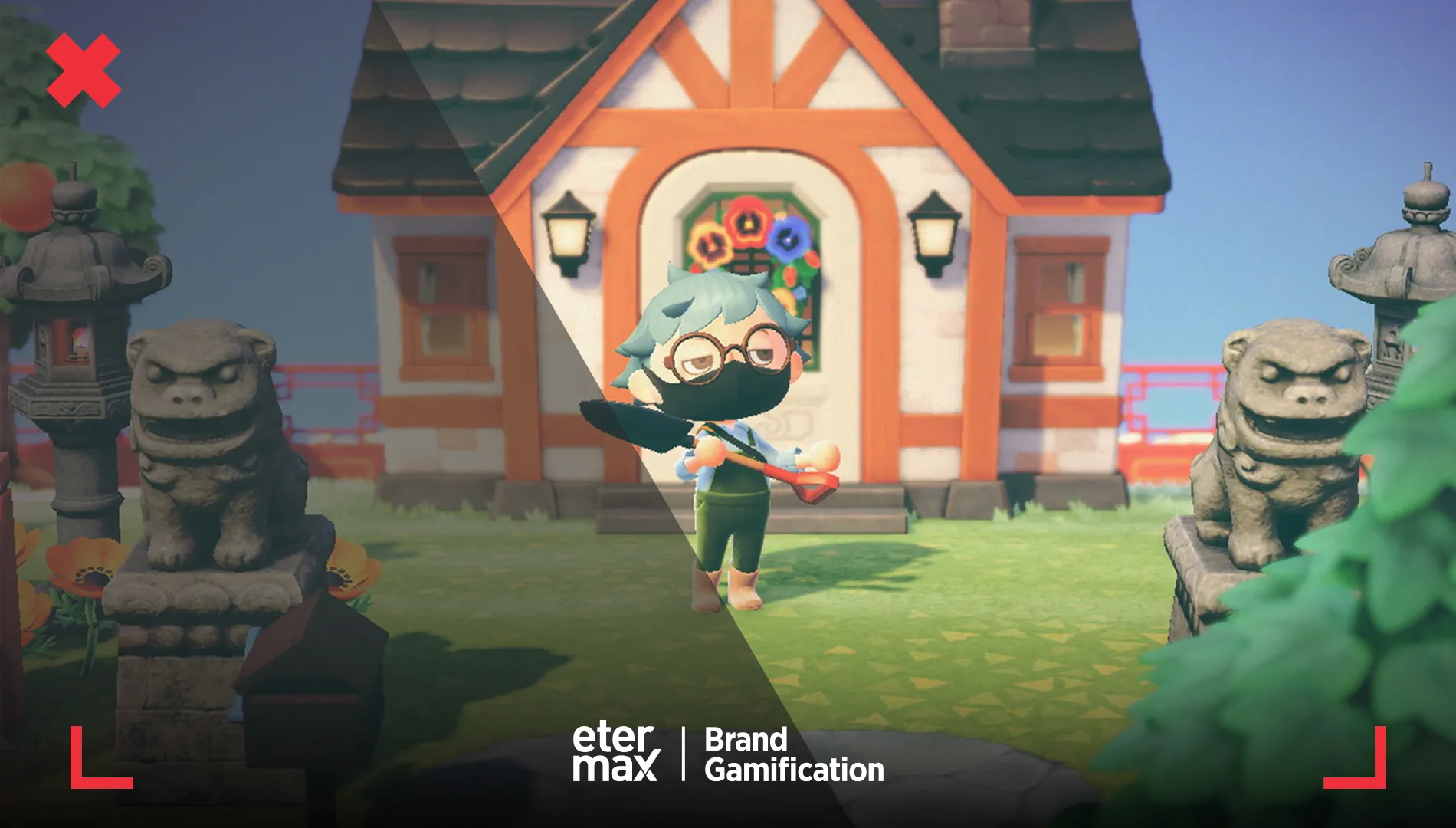Next August 29th will be International Gamers Day, and this month at etermax we want to celebrate all the complexity and diversity that being a gamer implies.
Contrary to popular belief, when we’re playing we’re not just resting on a couch (or in a chair, or whatever our setup is); it’s not a fully passive activity. Video games are much more than a lighted screen: they are a way to build worlds and communities, to connect with people. It’s not exclusive to multiplayers: even those games that are designed for the most solitary experience build discussion and people groups who share their interest across one platform or another.
But how do we present ourselves to others in games? How do we build our identities when we play? How do we position ourselves on that virtual universe and what do we choose to show?
An infinity of players
The question of who plays is already on its way to being outdated: we all play. There is no longer (maybe there never was) a single, monolithic gamer audience. Consequently, the ways we represent ourselves in the virtual world vary greatly among all of us.
Since the “analog” beginnings of avatars in Dungeons & Dragons, we players have chosen to present ourselves in a certain way in front of our peers: through shining armor, fantasy races or certain roles that we choose to take within a team, we can position ourselves in this or that way before others.
Today, games that offer some type of customization are more common to find than those that don’t. Taking into account the significance of discussions in many areas around identity and representativeness in the media, this is not surprising. Let’s take the case of Animal Crossing: Horizons as an example.
Similar to many games during the pandemic, the impact that Animal Crossing had was higher than expected, being a way to replace physical contact. Part of this was due to the customization possibilities it offers to players: the game includes 4692! clothing items. Yet there was a player who felt that something was missing. Taniesha Bracken started a Change.org petition for Nintendo to add more “inclusive hairstyles” to the game. After collecting more than 50,000 signatures, the company added the hairstyles.
Inclusion and representativeness within different media belong to the spirit of today’s times, and users consider them a central aspect of the content they consume. In a recent update, The Sims 4, one of the world’s best-known social simulators, granted players with the possibility to have their sims carry non-binary pronouns, and to even make up their own pronouns.
Despite neopronouns being valid or not (a topic outside the scope of this article), it’s a fact that gamers consider it essential to have the tools to function comfortably in the virtual world.
Ways to show ourselves
The metaverse, above all, is being built on the promise of empowering users’ expressions to an even higher level. Some services, such as Ready Player Me, are making efforts so that gamers can have the same avatar across different platforms. Thus the personality they build will have greater consistency through repetition.
In the video game industry and game studios, there are usually two types of gamers when it comes to their avatars: those who treat their avatar as a totally separate entity from their real selves, and those who see their avatar as an intensification of their personality. Some psychological studies suggest that the more gamers identify with their avatar, the more they enjoy games, giving them a greater sense of immersion in the virtual world.
It’s been a while since some brands began to take advantage of the opportunities that games offer in terms of personalization. Not so long ago, Animal Crossing had collaborations with global brands such as Gucci, Marc Jacobs or Ikea, and Fortnite allied with Balenciaga to launch a branded skins line. And, very long ago, in the days of The Sims 2 (15 long years ago) players could already access Ikea items and H&M wardrobes.
But gamers’ relationship with games is not one-sided. Not only are the elements of offline life transferred to virtuality: many times, what happens in the games we play affects us outside of them.
Phygital world
For example, designer Sandy Liang once commented, “Yesterday, I bought a frog helmet and some paw boots, and it made me want some paw boots in real life.” Avatars can help us pay more attention to how we present ourselves in the offline world, and real and virtual life are often in dialogue.
Dr. Alex Box, an identity designer (as she calls herself), predicts in an interview that the physical is more likely to mirror the digital in the future.
Up to what extent can we adopt what interests us from virtuality into the physical world? In 2012, a men’s fashion magazine featured characters from Final Fantasy XIII-2 wearing Prada. This year, Lacoste launched a collection hand in hand with the popular Minecraft, as a way for gamers to express their passion with a recognized clothing brand.
It’s no longer so easy to clearly point out when our real lives are cut off to make way for virtuality, the distinction between on and off no longer exists. If we take our cell phones and play Trivia Crack on our way to work, while we participate in its community, how could we draw the line that separates our daily commute from our presence in the virtual world?
Identity is a fundamental aspect for gamers and the way they behave in games. At etermax Brand Gamification™, we know what the interests of each audience are while playing, so don’t hesitate to contact us if you want to speak their language!
